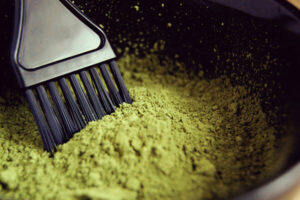Hair Loss Causes & Treatments, Pre and postoperative guide
Can I use hair color after chemotherapy?

– Hair color after chemotherapy –
Changes in your hair can affect how you feel. For some people, this change is one of the worst things about their chemo.
It’s understandable that you might not want to wait to dye your hair, but consider the information below before you get started.
How can chemo affect your hair
The effects of your chemotherapy on your hair will depend on the chemotherapy drugs you received. Some types of chemotherapy cause hair to fall out completely. Other types make the hair thin or change in texture.
You may find that your hair doesn’t grow back exactly like it used to:
– Color may change
– The texture may be different
– Your hair can be curlier
– Your hair can be smoother
My type of chemotherapy treatment is not causing hair loss can I still color my hair?
If your type of cancer treatment is not causing hair loss, as long as you don’t have any scalp or hair issues and you get tested for sensitivity, there’s no reason you should cannot color your hair if you wish. Many people continue to color their hair while undergoing various cancer treatments.
Scalp radiation therapy
If you are having external beam radiation therapy to the scalp, it is best to speak with your cancer nurse before coloring your hair. Indeed, the condition of the scalp is very important when treating the scalp area.
To be avoided for six months after chemotherapy
It is best not to use dyes or perms for about 6 months after the end of chemotherapy.
Indeed, when you recover from chemotherapy, your hair is more fragile than usual and it is more susceptible to damage. It takes about 6 months for the hair to get stronger.
It’s not a good idea to use:
– Permanent hair dyes
– Semi-permanent hair dyes
– Hair permanent
These products contain strong chemicals that can damage your hair. Your scalp may also be drier and more itchy than normal during this time. Using harsh chemicals on your hair can make the situation worse.
What can I use on my hair after 6 months
You can ask your hairdresser to suggest henna dyes, vegetable or natural dyes, or temporary dyes.
These are gentler on the hair than other types of hair dye, so hair experts believe it is safe to use them. However, even with a vegetable tincture, it is worth testing it before using it.
You can test the dye on a small section of your hair first to see how it works.
How do I perform a patch/sensitivity test before staining?
A patch/susceptibility test is the best way to try to verify that you are not allergic to a product. Although this guide is focused on hair dye sensitivity testing, you can use this guide to perform a patch/sensitivity test for almost any product. When it comes to hair color, a professional salon will normally do a test for you. If you are using a home kit, the instructions will tell you if you need to make one and how to do it on the pack information.
Natural hair coloring: what results can we expect?

The range of natural hair colors are available in all types of shades: golden blondes, darker tones and beautiful highlights. There is no doubt, you will find a suitable match. Natural hair dye and chemo go hand in hand. It has the ability to nourish and protect: your hair remains intact while allowing new hair to regain its former beauty.
What are temporary dyes?
Temporary dyes are like using a styling product. They will wash out when you shampoo your hair. Temporary hair dyes such as colored mousses, hair sprays, and root touch-up products can all be good options for adding color to new hair.
You can use temporary colors to blend gray and white hair and to add tones and deepen undertones to other natural colors. Although there are a number of blonde products on the market, it is your natural shade that will determine the quality of a blonde product. Generally speaking, making hair darker is easier than making it look lighter.
Temporary colors and camouflage products can also help fade finer areas of hair loss and make hair appear thicker.
There is little risk of allergic reactions to temporary colors.

Dr. Baykal Oymak is a highly esteemed transplant specialist hailing from Turkey, boasting an impressive 17-year tenure in the medical field. His professional journey commenced as a dermatologist at Bogazici Hospital in Istanbul, where he began to hone his expertise. Since then, Dr. Oymak has conducted a remarkable tally of approximately 14,000 triumphant hair transplant procedures within Turkey. Additionally, he holds specialization in PRP treatment and Mesotherapy, further solidifying his reputation as a versatile and accomplished practitioner in the realm of dermatology and transplantation. » SCHEDULE YOUR HAIR TRANSPLANT IN TURKEY HERE «
